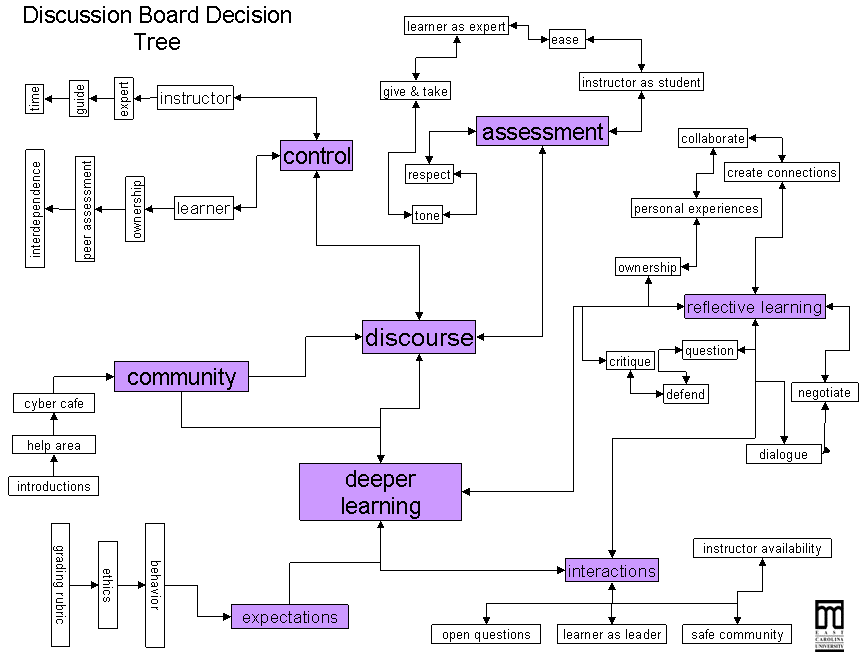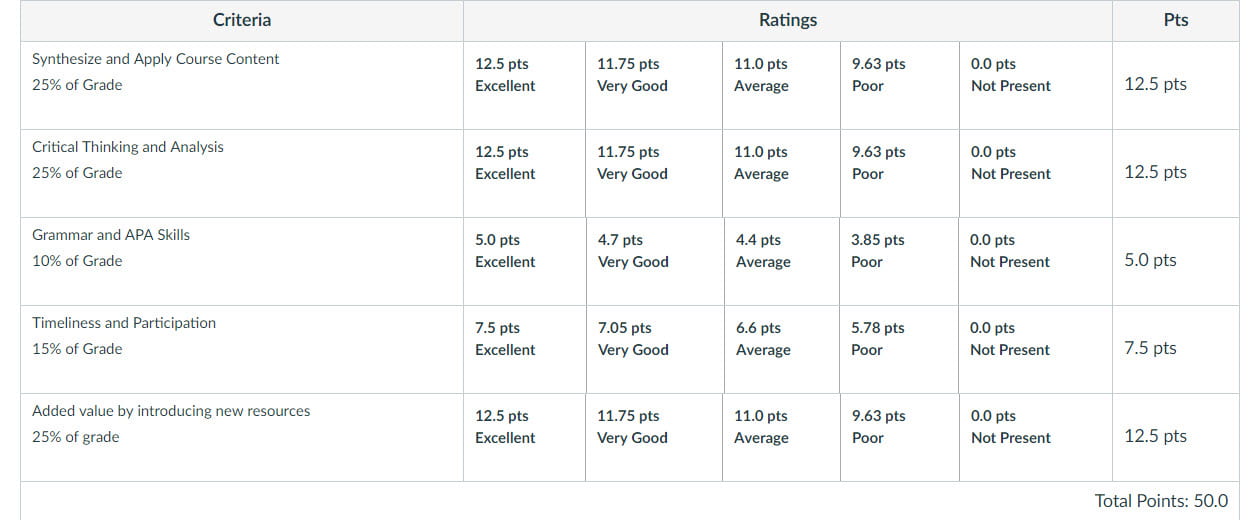Discussion forums are the scene of much of the interaction that occurs between student-to-student and student-to-faculty. It is where the social presence of both faculty and students is most evident. Palloff and Pratt (2007) stated, “Given that the discussion board is the heart and soul of the online course, constructing it in a well-organized fashion is critical.”
Discussions should mirror the organization of the syllabus. Typically, a course has some sequencing of units or lessons, either by week or by chapter in the textbook or by topics. Discussion forums flow from this organization. To achieve the deeper learning desired in any course, many factors have to be considered in constructing your discussion forums.
Discussion forums can serve many roles. In addition to forums for specific lessons and topics, many typically add two additional forums:
- Faculty Office
- Given that online classes are 24/7, the concept of “office hours” becomes somewhat moot. Students need a safe place to ask questions, and if one student has a question, chances are others have the same question. Answering a question in a public forum covers both the questioner and those who wondered the same thing. It is a good idea to empower your students that if they see the question first and know the answer, they should feel free to respond. This is the one forum where it makes good sense to allow “anonymous” threads. There is no such thing as a dumb question, but some students are reluctant to ask, so this gives them a safety net.
- Student Center
- In a face-to-face class, students have the option of stopping by the student center enroute to or after class, and during breaks, students typically congregate outside the class. Discussions in these settings can be on any topic. It is therefore a good practice to provide this same outlet to your online students.
A good deal of the learning in online classes occurs with the interaction in discussions, so crafting the questions is critical. Students respond to engaging questions. Note the difference between these two:
- Any questions about Chapter Two?
- Chapter Two discusses the historical roots of management. What do you see as the change which had the most impact in the past 50 years (and why?)?
You will get out of discussion boards what you articulate and model. You should set expectations on participation, grade both participation and the quality of participation, and provide rubrics that give students the standards by which they will be judged. Rubrics that I have used:
Rubric for Initial Post:
Rubric for Commenting:



